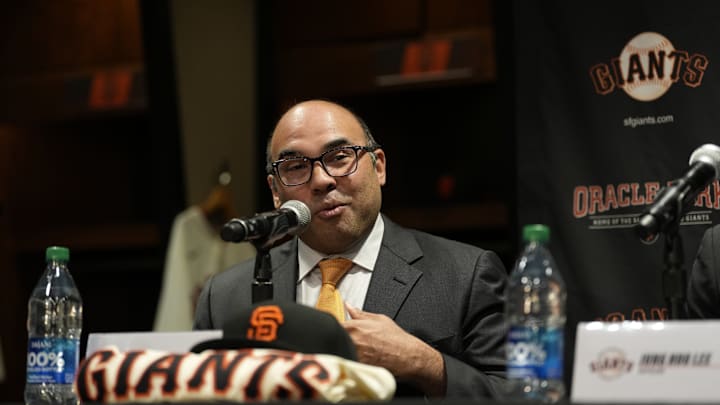The SF Giants began the offseason with an inherent roster issue. That issue was that they had a glut of options both in the starting rotation and in the outfield. After a pair of trades, they have checked off one box in relieving some of that glut.
SF Giants front office addresses one inherent roster issue with offseason moves
I think there are certainly some fair criticisms to levy against the front office. That said, there is one area where they do a nice job and that they are willing to admit they made a mistake and move on.
They did it last offseason when they cut ties with Tommy La Stella with one year remaining on his three-year, $18.75 million pact. It made no sense to try and ride out the final season of a deal for a player who no longer had a role on the roster.
The Giants have admitted similar mistakes this offseason. The first move was sending Mitch Haniger and Anthony DeSclafani to the Seattle Mariners in exchange for Robbie Ray. It was clear that DeSclafani did not have a role on the 2024 roster, especially with so many other starting rotation options.
Even if the Giants did enter this season with him, the veteran pitcher would have had a tenuous hold on a roster spot after posting a 5.16 ERA in 24 outings since inking a three-year, $36 million pact. Plus, he finished the year on the injured list in each of the last two seasons. Injuries happen and there is not much you can do about it. However, the Giants could not pencil in DeSclafani's workload with any type of precision. If he performed, it would have been considered a bonus.
In that same move, the Giants shipped Haniger back to Seattle. He was coming off of a season in which he struggled to a .631 OPS in 229 plate appearances while spending considerable time on the injured list. After signing Jung Hoo Lee to a six-year deal, the Giants had a lot of outfielders on the roster.
It could have worked, but starting the year with Haniger along with Lee, Mike Yastrzemski, Austin Slater, and Michael Conforto in the outfield would have been a tough task. Not impossible, but it did not allow for much flexibility or creativity. Plus, Giants outfielders posted a 1.8 fWAR in 2023, which was the third-worst mark in baseball.
Bringing back the same group (excluding Lee) and hoping for different results would have been unfavorable.
It is hard to say that signing Haniger originally was a bad move. Of course, in hindsight it was, but the right-handed bat had a strong offensive track record when healthy during his time with Seattle.
Lastly, the Giants shipped Ross Stripling to the Oakland A's on Friday. It feels like a precursor to another move given that the Giants have such little track record to go off of in the starting rotation outside of Logan Webb.
Stripling conceivably could have entered the season as the No. 2 starter in the rotation before the trade. He was coming off of a rough season in which he tallied a 5.36 ERA in 22 outings. There is a chance that he rebounds, but for a pitcher who struggled so much with the long ball in 2023, that is just a quality that does not improve with age.
Similar to Haniger, it is hard to say that signing the veteran pitcher was a bad move. He was coming off of a 2022 season in which he recorded a 3.01 ERA in 32 appearances for the Toronto Blue Jays. San Francisco felt like a good fit.
It did not work out that way. These moves are not going to win over the fanbase, but the front office deserves some credit for addressing an inherent roster glut by making the moves that they did. Were these initial signings mistakes? It did not work out and that is all that really matters.
Some teams tend to ride out contracts until they expire. The Giants have done this quite a bit in recent years. However, the decision to move off of DeSclafani, Haniger, and Stripling does give the Giants more flexibility to either make another move or allow a younger player to slot into that roster spot. If it is the latter, at least there will be some opportunity for playing time with these moves completed.
